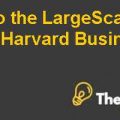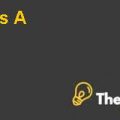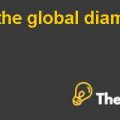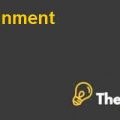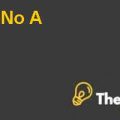
Q A) Illustrate with a simple example how a capital markets Structured Finance transaction (involving an underlying asset with random value, and derivatives on that asset) can be structured as a perfect substitute for a loan without recourse.
ANSWER:
Structured finance includes all advanced financial arrangements either private or public. It serves through efficiently refinancing and through any profitable activity ahead of the scope of being recorded in the balance sheet such as debt, bonds and equity for reducing the cost of capital and for the mitigation of the risks involved in the liquidation of a company towards default.
In general, the structured finance or investment combines the traditional assets with the claims as it transfers the risks such as derivatives and claims made on commodities. Structured finance also imitates the traditional assets classes by pooling credit derivative deals; it provides the flexibility to lender in terms of time to maturity, its design and its type that allows the issuer of the instruments to compensate the higher return with respect to the investor’s risk appetite. The example is given in question 2 where it verifies the structured finance transaction without recourse of loan.
Q B) Suppose the following data: time horizon = 3 months; spot price of underlying (non-dividend paying) asset is $31; continuously compounded interest rate, r = 10%; exercise price = $30. The price for the in-the-money (European) call option is $3. Discuss the scenario of a (European) put contract (with parameters equal to the call), and that is priced at $2.25. What if the put is priced at $1? What is the ‘correct’ price of the put?
ANSWER:
In the above example the European put contract would fall from 3 to 2.25, and with this the put option holder would force the put option holder to sell that option and if the put price goes more below than $1 then again the investor would force the put option holder to sell that option to investor. In this scenario, the correct price of put option is $2.
|
Input Data |
|
|
Stock Price now (P) |
31 |
|
Compounded Risk-Free Interest Rate (rf) |
10% |
|
Present Value of Exercise Price (PV(EX)) |
30 |
|
Value of Call |
3 |
|
Value of Put |
2.00 |
Please refer the Excel sheet for the calculation.
Q C) Explain and illustrate a non-recourse loan from the lender’s perspective using the language of derivatives.
ANSWER:
The non-recourse loan is secured loan backed by the collateral pledged by the borrower. It is secured because the lender is getting the collateral for lending the loan and due to collateral; it ensures that if borrower defaulted than the lender can sell that pledged asset for the recovery of the default amount. In the financial derivative, the non-recourse loan is the instruments premium charged by the lender for securing the borrowers risks and if that risks is too high for the lender then the lender has the right to sell that assets as it certainly recovers the default amount not completely but equal to the worth of that pledged assets.
- a. Option Instruments:
In the option derivative instruments, the non-recourse loan is the premium paid by the borrower by getting the option instruments.
- b. Future Contract:
The non-recourse loan from the lenders perspective is the settling amount that the borrower has to pay whenever uncertain situation arises, which put lenders investments under risk.
- c. Forwards Contract:
As this is the tailor made contract and is only made into the over counter market so this has the extreme level of risks associated with it. For non-recourse loan, the forward contract is mutually designed contract and in this contract, both the parties agree mutually on a specific price so the non-recourse is not possible because the parties involved in this have already analyzed the situation before agreeing on a specific price. Therefore, non-recourse loan is not possible in this and lender has to bear all the risks associated with it.
- d. Swaps:
Swaps are the instruments that are used for hedging the currency risks, liquidation risks, foreign exchange risks, and so on so forth. In this, one’s risks are transferred to other party and the parties are involved in this so as to mitigate each other’s risk. Hence, both parties are involved in dealing the risk with the level of their risk appetite so this instrument does not have the non-recourse loan option as far as the lender is concerned.
Q D) Explain the type of financial product you have structured in the following example:
ANSWER:
The financial product that has been used in the above table is the redeemable bond or finance leasing or structured finance. The redeemable bond is the mode of financing of the company that raises funds by offering the bond to the general public on interest rates.................
This is just a sample partial case solution. Please place the order on the website to order your own originally done case solution.

